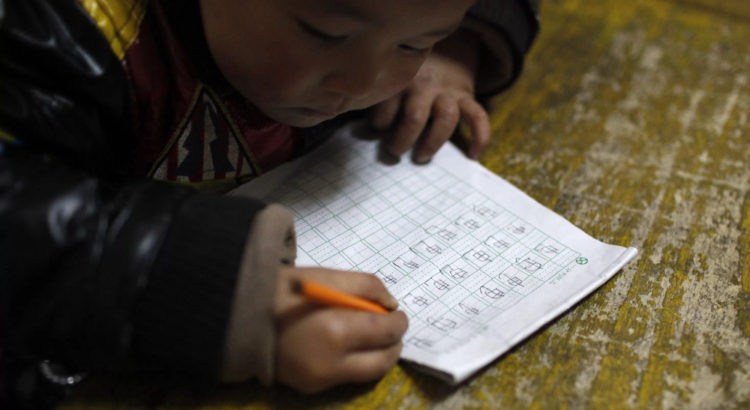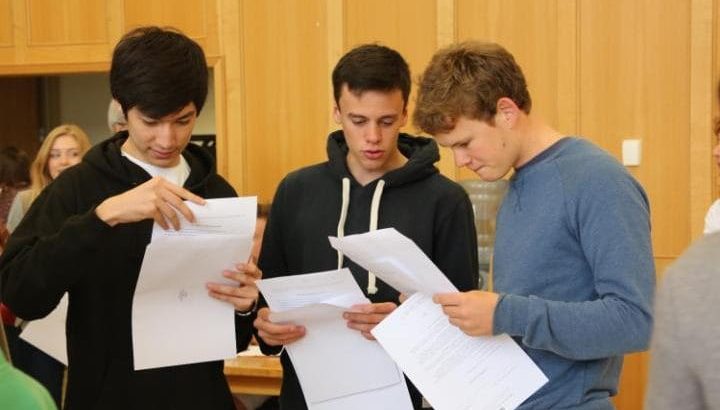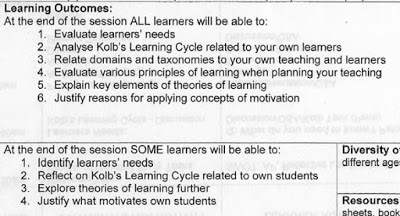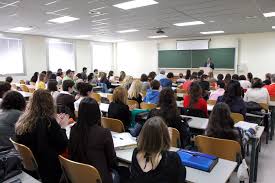China/Julio de 2017/Fuente: The News Lens
Resumen:
El nombre, escuela del condado de Qishan 702, o mejor dicho su número, habla mucho sobre el estado típico de la enseñanza en China: carente de individualidad, pragmático en su misión de impartir la educación más básica.
En China, el aprendizaje de rutina dirigido a los estudiantes de aterrizaje de alto puntaje en los exámenes sigue teniendo considerable influencia, y la admisión a una buena universidad representa un boleto de oro para una vida mejor. Esto es especialmente cierto en el campo, donde la brecha entre urbano y rural en la educación es particularmente evidente en la calidad de las instalaciones escolares y la formación de maestros.
Sin embargo, en esta escuela primaria y secundaria combinada rural que se aloja dentro de un complejo de maquinaria de automoción, se están realizando esfuerzos para implementar programas que desarrollen habilidades como creatividad y trabajo en equipo, en un intento de poner a los alumnos en pie de igualdad con sus compañeros en las zonas costeras desarrolladas.
The name, Qishan County School 702, — or rather, its number — speaks volumes about the typical state of teaching in China: cookie-cutter, devoid of individuality, pragmatic in its mission to deliver the most basic education.
In China, rote learning aimed at landing students high exam scores still holds considerable sway, and admission to a good university represents a golden ticket to a better life. This is especially true in the countryside, where the yawning urban-rural gap in education is particularly apparent in the quality of school facilities and teacher training.
But at this rural combined primary and middle school housed within an automotive machinery factory compound, efforts are underway to implement curricula that develop skills like creativity and teamwork, in an attempt to put pupils on equal footing with their peers in the country’s developed coastal areas.
Leading the battle to bring greater educational opportunities to the countryside are people like Ma Rong. Pacing the classroom wearing a headset, she looks more like an energetic TV presenter than a teacher. The 42-year-old educator at School 702 begins her class with a series of games: In one, small groups of adolescent students line up according to height or the length of their hair; in another, students hold hands and must find a way to unravel their arms through careful coordination.
While the games might seem too childish for soon-to-be teenagers, they belong to a range of creative activities that have been added to the traditional school curriculum with the help of nongovernmental organization Adream Foundation. School 702 is just one of 2,500 schools around the country that are taking part in activities initiated by Adream, which focuses on addressing inequality in China’s education system.
According to founder and chairwoman Pan Jiangxue, Adream’s core aim is to complement schools’ official curricula with classes to help boost the confidence and creativity of children from disadvantaged backgrounds. Throughout the compulsory education years — grades one through nine — students at schools in the Adream program can participate in up to 300 of these creative classes that foster concepts like self-awareness, teamwork, and love and respect for nature and the arts.
Qishan County lies west of the imaginary Hu Line, which slices China diagonally into a densely populated, more developed eastern part and an expansive, thinly populated western area. Many regions west of the line suffer from grinding poverty, and access to quality services like education is often acking.
In rural areas, almost two-thirds of students drop out of school by grade 12, according to surveys of 24,931 secondary school students conducted by the Rural Education Action Program, a collaboration among the Chinese Academy of Sciences, Stanford University, and other universities. Only half of middle school graduates go on to high school, the study found.
Students told the researchers that they had left to find work or had been inspired by their peers who had already quit school. “If dropout rates continue as they are today, increasing unemployment and widening inequality could hinder economic growth and stability on a national scale,” the researchers wrote.
Qishan sits beside another important geographical divider: the majestic Qinling Mountains, generally thought to split China into north and south. Nearby is the Wei River, the site of the Zhou Dynasty’s first capital in 1046 B.C. and home to the “Rites of Zhou” — an ancient text on the organizational theory that contains a chapter about education.
Yet contemporary China leaves small rural towns few opportunities to employ leading pedagogical techniques. In contrast, wealthy metropolitan cities such as Beijing, Shanghai, and Guangzhou boast well-resourced public schools and plenty of private sector educational institutions offering top-notch teaching to families who can afford it.
In Shanghai, per capita expenditure on education and recreation by private households in 2015 was 4,046 yuan (just under US$600) per month, almost double Shaanxi province’s 2,201 yuan a month.
Government funding differs, too. According to official 2015 statistics, the average public expenditure on education in rural areas was roughly 11 percent lower than the national average for middle schools and 7 percent lower for elementary schools.
The country’s most highly trained teachers typically flock to developed coastal areas to work. Many of those who remain in the countryside are under significant pressure and have neither the time nor the power to influence the rigid curricula mandated by education authorities.
At School 702, 43-year-old teacher Zhang Jun says the Adream program involves only a small proportion of teachers and does not affect regular classes, in which traditional teaching methods like rote learning persist. “If we want to change the whole [system] completely, it should start from the top down,” says Zhang. “Our teachers are the front-line workers, and we don’t have the ability to change the system.”
With a population of just under half a million, Qishan is known as a hub for industries like machinery manufacturing, building materials, pharmaceuticals and chemicals, textiles and garments, and paper printing. Though teacher Ma’s instruction style would hardly be considered groundbreaking abroad or even in more developed parts of China, it is a novelty in areas like this, where students and their families tend to underestimate the importance of education.
Supplementary creative classes may be a good start, but teachers, students, and experts alike agree that these measures have little effect on the overall system. Students in less developed parts of the country still struggle to secure social mobility, Pan tells Sixth Tone, and while she believes Adream’s classes are one of many steps necessary to improve education quality in China’s countryside, she concedes that the classes’ impact on students is “weak.”
At Qishan County No. 3 Middle School — which is about a 30-minute drive from School 702 and is also part of the Adream network — a 12-year-old student surnamed Duan describes the creative classes as only “so-so.” The school’s deputy principal, Su Hao, welcomes Adream’s “open” approach to teaching but remains pragmatic about students’ grades. “Scores are still important,” he says. “Our high school entrance exam results are among the top in Qishan County, and the ultimate goal is to gain admission to a good school.” Around 380 of the middle school’s 1,200 pupils are first-year students taking Adream’s classes.
While student enthusiasm for Adream’s efforts appears subdued, the NGO has clearly invigorated rural teachers. On a recent morning, Lu Liqiang, a 47-year-old physics teacher at No. 3 Middle School, stands in the middle of a bright orange Adream classroom decorated with paintings and handwritten student essays — a stark contrast to “regular” classrooms, which tend toward the drab.
Lu says that before he underwent training through the Adream program five years ago, his classes lacked active learning. Now, he says, participation is key. On the day Sixth Tone visited his class, Lu started off with an open-ended question on Bernoulli’s principle — which describes the relationship between a fluid’s speed and pressure — followed by hands-on activities involving straws and cups of water to demonstrate the effect.
Ma from School 702 — who attended her first Adream training session during the summer of 2014 — agrees that the new techniques she has learned have breathed life into the school’s classrooms. She and her colleagues were initially uninterested in the training, she says, but they became “absorbed” and motivated after learning about the benefits of a more playful approach to education. “The sense of long-term job burnout faded away,” Ma says.
According to Pan, Adream plans to reach more teachers in the future by working with local education authorities. “Teachers who are impacted by us can change the way they teach in their compulsory courses,” she says.
Ma herself attended School 702 and remembers her own teachers back then simply reading aloud from a textbook. “They didn’t really care whether we understood or not,” she recalls. Being exposed to creative learning techniques like the ones she employs in the classroom now “would’ve been delightful,” she says.
Still, rural schools continue to lack appeal among parents. Even Ma doesn’t want her 12-year-old son to attend middle school in Qishan. Baoji(寶雞), the nearest big city, offers better education, she says, adding that it has become customary in China for people to move to more developed areas — from village to town, or from town to city — in pursuit of a better life. “I wouldn’t want my child to come back here to work,” she says. “I hope he can spread his wings and fly out into the vast world.”
Fuente: https://international.thenewslens.com/article/74024


















 Users Today : 70
Users Today : 70 Total Users : 35460087
Total Users : 35460087 Views Today : 89
Views Today : 89 Total views : 3418720
Total views : 3418720